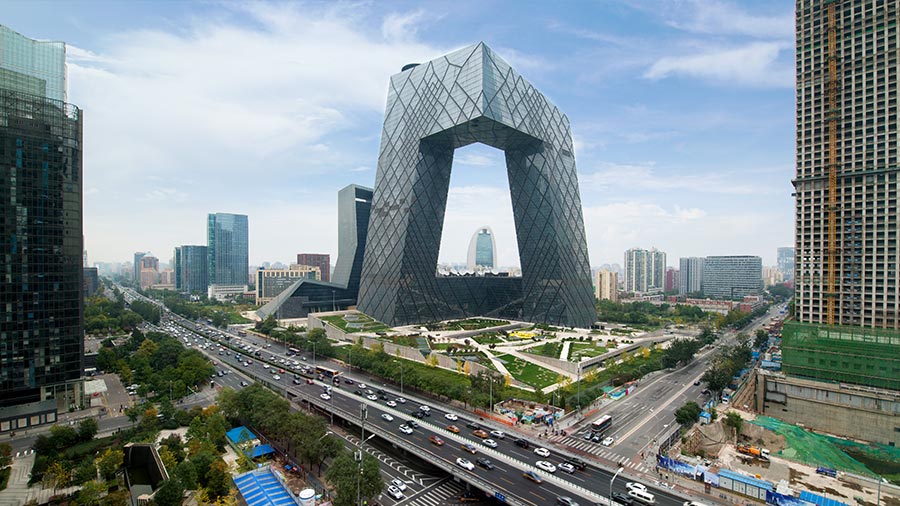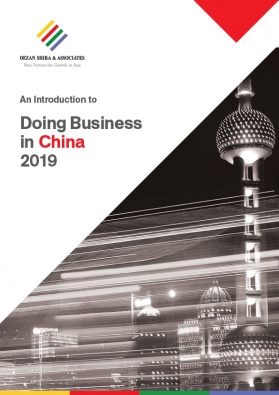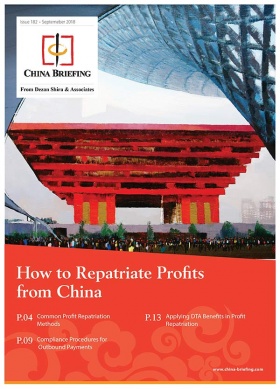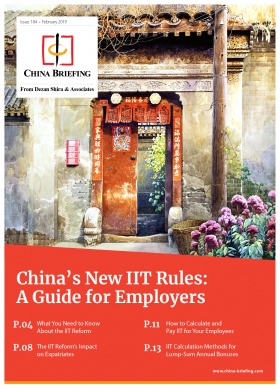Economic Reform in China: Current Progress and Future Prospects
Last December marked the 40th anniversary of China’s reform and opening-up policy, which was launched under the leadership of Deng Xiaoping at the 1978 Third Plenum.
This policy jump-started China’s transformation from a poor and underdeveloped centrally-planned economy into an economic powerhouse, increasingly driven by the market.
The anniversary, however, was overshadowed by the current challenges in the Chinese economy and uncertainty over the direction of economic reforms.
In 2018, China’s economy grew at the slowest rate since 1990, and the country became embroiled in a trade war with the US. At the same time, the economy has developed to a point where its established growth model is no longer tenable.
At this crossroad in China’s economic development, we ask which way are reforms heading?
China’s reform and opening-up
China’s reform and opening-up policies introduced private business and market incentives to what was a state-led communist system. Prior to 1978, the private sector was virtually non-existent; today, private firms contribute to approximately 70 percent of China’s GDP.
To get to this point, China underwent vast changes to its economic system over the past 40 years. Despite the breadth of the changes, however, China’s economic reforms have been characterized by gradualism and experimentalism, or “crossing the river by feeling the stones” as Deng famously once said.
Special Economic Zones (SEZs) typified this gradualism and experimentalism, where the government piloted new reforms in geographically contained areas.
No region in China better encapsulates the success of this strategy than Shenzhen, which was at the forefront of reform and opening-up initiatives and exploded from a tiny fishing village into one of the country’s wealthiest and most dynamic cities.
Nevertheless, although the market was given a more important role in resource allocation as a result of reforms, the state still maintains a strong role 40 years later.
In this respect, China’s development and reform path is unique, with it sometimes being referred to as the ‘China Model’ of development. To this day, it is debated whether China developed because of the continued role of the state in its economy or despite it.
This debate is an important one because it informs the future direction of reforms. What is clearer is that the reform and opening-up policies are regarded overall as a success.
Over the 40-year period, 740 million people have escaped poverty and the country posted a prolonged period of double-digit economic growth.
China is now the second largest economy in the world behind the US and is figures among the World Bank’s Middle-Income Countries (MICs) based upon GNI per capita.
Challenges and further reforms
Despite the successes of the Chinese economy, in recent years, it has shown vulnerabilities and entered a critical stage for its continued development and reform.
Economic growth has slowed from the previous double-digit rates, with this being described as the ‘new normal’ as the country’s economy becomes more mature.
In 2018, China’s GDP grew by 6.6 percent, according to official statistics, and the leadership in Beijing has lowered the growth target to 6-6.5 percent for 2019. Many economists argue that actual growth is significantly lower than these official figures.
Economists from both inside and outside of China have called for the country’s leaders to adopt structural reforms so that it can continue to develop and avoid the dreaded ‘middle-income trap’.
The middle-income trap refers to when an economy becomes developed enough that it loses its low-cost advantages but is not developed enough to transition to a higher-value knowledge-based economy, thereby slumping to middling performance.
While almost all analysts agree that China must adopt wide-ranging economic reforms to sustain its economy in the long-run, there is a split regarding what exactly those reforms should entail.
Liberal economists argue that China should adopt more market-based measures, such as by reducing the role of state-owned enterprises and market-distorting support in the economy.
Others with a more statist view, argue that China should increase subsidies to strategic industries and protect domestic firms to promote their development.
At the 2013 Third Plenum, 35 years after the launch of Deng’s reforms, the Communist Party under the leadership of President Xi Jinping made a decisive commitment to further reforms.
At the plenum, a 60-point plan entitled “The Decision on Major Issues Concerning Comprehensively Deepening Reforms” was released. One of the key decisions pledged to “allow the market to play a decisive role in resource allocation”, which appeared to signal a preference for market-based measures.
A greater role for the market since 2013
Since the 2013 Third Plenum, the market has been given a more decisive role in some areas.
For instance, foreign direct investment (FDI) restrictions have been eased due to China moving from an approval-based system to a negative list-based system.
This new system allows most inbound FDI to proceed without a government review, except in those areas that are on the negative list. Over time, the scope of this negative list has also been reduced.
FDI is important to China’s development because it plays a key role in driving higher value-added industrial output. For example, in 2016, foreign funded businesses accounted for 77 percent of China’s total high-tech exports.
Restrictions on FDI have been eased even further for firms investing in free trade zones (FTZs). FTZs were first launched in 2013 and continue in the spirit of Deng’s gradualism and experimentalism by allowing reform policies to be tested before some of them are rolled out on a national scale.
Trade facilitation reforms, which China prioritized by ratifying the WTO Trade Facilitation Agreement in 2015, were implemented in such a way.
These reforms have led to the implementation of a “single window” system nationwide to simplify trade inspections, declarations, taxes, and other procedures. It partly explains why China moved from 78th in 2017 to 48th in 2018 in the World Bank’s “Ease of Doing Business” rankings.
Further to the above, there are signs that Beijing is willing to implement tough yet necessary reforms to sustain China’s economy in the long-run. For example, the government has shown restraint with its monetary policy which has reduced financial risks through deleveraging.
This difficult decision is one of the reasons why China’s economy is slowing down, but Beijing seems willing to accept this as long as the economy does not experience a “hard landing”.
To ensure that a “hard landing” does not happen, Beijing has been more active with implementing fiscal policy in place of wide-ranging stimulus measures.
At the annual “Two Sessions” meetings in March, for example, Premier Li Keqiang announced US$298 billion in tax cuts for businesses.
The state reasserting control since 2013
Even though there has been progress in some areas since 2013, in other areas it appears the state is trying to reassert control at the expense of the market. There are therefore questions surrounding Beijing’s commitment to market-based reforms.
There is even speculation that Beijing is content with the current mix between the state and market, and rather than focus on further reforms, it is more focused on exporting the ‘China Model’ through policies, such as the Belt and Road Initiative (BRI).
The Winter 2019 edition of ‘The China Dashboard’, which tracks the reform goals decided at the 2013 Third Plenum, shows reforms are not moving forward in eight out of 10 areas.
One of the areas where reforms are ‘backsliding’ is state-owned enterprise (SOE) reform, with the role of SOEs in resource allocation advancing while the role of the private sector is receding. One of the reasons for this is that SOEs enjoy more preferential access to credit than the private sector.
Although the government’s deleveraging campaign has reduced financial risks, it has hit the private sector harder than the state sector. This is despite the private sector being three times more efficient on average than the state sector and contributing close to two-thirds of China’s GDP growth.
In terms of FDI, even with the easing of restrictions with the introduction of the new negative list, there are claims that there is still an unlevel playing field with domestic firms being given preference over foreign firms.
This is exemplified by the ‘Made in China 2025’ industrial strategy, which is at the center of the trade war with the US.
Made in China 2025 is an industrial policy issued in 2015 that targets 10 high-tech sectors under the guidance of the Chinese state.
Among other claims, the US argues that the strategy favors domestic firms in the allocation of subsidies and forces foreign firms to transfer technology as a condition for market access.
As a result, the US also argues that China is violating its WTO commitments, and that the country should adopt market-based reforms to level the playing field.
In defense of its development model, Beijing has even gone as far as calling for WTO reforms that “respect members’ development models”, which would grant China more leeway in implementing statist and protectionist policies.
However, recently there have been signs that Beijing is willing to compromise and address Washington’s concerns.
For example, in March China’s National People’s Congress passed a new foreign investment law. This law aims to address common complaints from the foreign business community, such as by explicitly banning forced technology transfers.
Critics, however, say that many of the provisions in this document are still quite general, and the law itself will not take effect until January 1, 2020.
‘Feeling the stones’: What to make of China’s reforms record
Since 2013, the progress of reforms has been mixed. On one hand, China has made clear progress in some areas, such as improving the business environment and opening some new sectors to foreign investment.
On the other hand, however, the state has reasserted itself rather than given the market the decisive role. Xi, for instance, has called for SOEs to become bigger, stronger, and more efficient, while the Communist Party has increased its presence in both state-owned and private firms in recent years.
Given China’s mixed record of economic reform since Xi came to power, it is not yet clear whether the statist turn is a fundamental change in direction or a temporary period of caution and “feeling the stones” before reforms speed up again.
What’s next in China’s reform process and the impact of recent events on China’s development will only become clearer with time, particularly as the country is pressured by the US to adopt structural market-based reforms.
Yet, despite external pressure to pursue certain reforms – or because of it – China is determined to find and pursue its own reform path – just as it did in the past. As Xi said on the 40th anniversary of ‘the reform and opening up’, “No one is in the position to dictate to the Chinese people what should and should not be done”.
About Us
China Briefing is produced by Dezan Shira & Associates. The firm assists foreign investors throughout Asia from offices across the world, including in Dalian, Beijing, Shanghai, Guangzhou, Shenzhen, and Hong Kong. Readers may write to china@dezshira.com for more support on doing business in China.
- Previous Article Visite de Xi Jinping en France : mise au point sur la coopération franco-chinoise en 2019
- Next Article China and Italy Sign New Double Taxation Agreement










